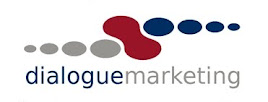
Related Articles:
Do You Expect To Close On Your First Contact?
Alternatives To A Newsletter .... Demystifying The Mystified
This week I was helping a prospective client establish a communication strategy to acquire new business. The process sometimes seems confusing, so I have taken this opportunity to explain it in more detail.
It is extraordinarily rare that a prospect is ready to purchase, when you happen to make contact. Assuming you have a market, of course; usually you will make contact with a prospect somewhere in the sales cycle, just not where you need them to be. This can be best described as harvesting green bananas; and may account for 95% of your leads.
What this means is that if you do not nurture this prospect, until they are ready to transact, chances are they will be lost to a competitor. It is suggested that 80% of marketing expenditure, on lead generation, goes to waste, due to lack of discipline and commitment.
So what to do?
Well, that is the point of meaningful dialogue. You need to engage prospects consistently, and through value-added exchanges. I intentionally use the word dialogue, and exchange. There is no point simply blasting out newsletters, or emails. All this does is create work for you, and you end up operating in a vacuum. You never become better informed as to the state of the prospect; and you could well be hurting your brand.
So the objective is to share information with the right people, and in so doing establish a relationship. Ultimately, the ongoing, timely sharing of information maintains a brand awareness, which leads (pun intended) to a transaction. Dialogue marketing is more than just having a salesperson call every so often, to find out if a prospect is "ready to buy yet."
It has been demonstrated that 69% of buyers are more inclined to transact, where a salesperson has assumed the role of advisor. This means that it is important for you to share knowledge, and educate your prospects. Forget the scripted sales pitches; the cheesy verses that interrupt my dinner. Become the trusted advisor that your prospect calls, when they are ready to transact.
But how to do it?
Here we are going to refer to my diagram, above.
You probably have a source of leads; this could be advertising, trade enquiries, seminars, trade shows, or any myriad of sources.
Make sure you add your website and blog, to those sources. But ensure that your website and blog provide the ability to collect prospect information. This information, together with information sources from other areas, should be fed into a centralised database.
Now, and this is where the confusion comes in, there is always a tendancy to want to blast off a message, telling the prospect everything you can do. This is wrong. If you tell them everything upfront, not only are you pressure selling, but you haven't shared any knowledge and you destroy your the opportunity to communicate in the future, without repeating yourself.
You need to nurture them; gently. You send a message which discusses a topic relevant to their situation (call this Dialogue 1). Included therein could be a link to a related blog article, where you can lay the subject out in more detail. An important part of the dialogue, is to include an online (or email embedded) survey. If the survey questions (never more than 3) are answered, these give you an insight into the state of the prospect, and may provide a selling opportunity.
So, if you have 5 key areas that could cause a prospect to transact, instead of mentioning all 5 upfront, you break them up into 5 or more seperate communications, which are dispatched at timed intervals. Each contact relates to one of the key areas, which is supported by a blog article and an online survey. Last week I discussed Dialogue Marketing for Financial Services; this was one example of a value-added exchange.
Any response by a prospect, that produces a selling opportunity, takes the prospect to a different database, and a new series of messages.
It is important to place yourself in your prospect's position, think through what is important to them, and then create a meaningful communication strategy.
And The Results?
Close ratios are higher, sales pipelines are stronger, brand awareness is stronger, customer retention is 50% higher, and nurtured prospects produce 250% more qualified sales leads, than unnurtured prospects.
Download a printable version here.



No comments:
Post a Comment